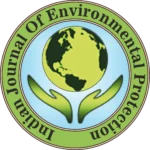IJEP 44(13): 1162-1168 : Vol. 44 Issue. 13 (Conference 2024)
Pooja Kapoor1,3, Pooja Joshi1,3, Manoj Pal1, Yashaswi Singh2 and Vipin Parkash3*
1. Graphic Era (Deemed to be University), Department of Microbiology, Dehradun – 248 802, Uttarakhand, India
2. Graphic Era (Deemed to be University), Department of Biotechnology, Dehradun – 248 802, Uttarakhand, India
3. Indian Council of Forestry Research and Education (ICFRE) – Forest Research Institute, Forest Pathology Discipline, Forest Protection Division, Dehradun – 248 006, Uttarakhand, India
Abstract
Actinobacteria are successful biocontrol agents extensively used for controlling various plant fungal diseases and also help in plant growth promotion. The major aims of this study were to explore the potential antagonistic capabilities and plant growth-promoting efficiency of five Actinobacterial isolates isolated from the rhizospheric soil of Pinus roxburghii, naturally occurring in Benog Wildlife Sanctuary under Mussoorie Forest Range, Uttarakhand. The target of this study was to assess their antagonistic effects against two fungal pathogens that is Pestalotiopsis species and Curvularia species. Out of the five actinobacterial isolates examined, 2 isolates referred to as FRI/BWS/S3A and FRI/BWS/S3B, exhibited the most remarkable antagonistic effects against Pestalotiopsis sp. and Curvularia sp. FRI/BWS/S3A showed the highest inhibition percent, which is 43% for Curvularia sp. (R5) and 37% for Pestalotiopsis sp. (R1). Additionally, all five isolates exhibited positive results in terms of their plant growth promoting (PGP) attributes, including phosphate solubilization, production of indole acetic acid (IAA), siderophore and hydrogen cyanide (HCN). The outcomes of this study highlight that actinobacterial isolates obtained from the rhizosphere of P. roxburghii possess the potential to exert antifungal effects on fungal pathogens in-vitro are discussed in this research paper and further studies are required to check their potential in the field for their application in agricultural and forestry sectors.
Keywords
Pinus roxburghii, Actinobacteria, Pestalotiopsis sp., Curvularia sp., antagonist, plant growth promotion
References
- Sharma, C.M., et al. 2010. Effects of slope aspects on forest compositions, community structures and soil properties in natural temperate forests of Garhwal Himalaya. J. Forestry Res., 21(3): 331-337.
- Barka, E.A., et al. 2016. Taxonomy, physiology and natural products of actinobacteria. Microbiol. Mol. Biol. Reviews. 80(1): 1-43.
- Rangseekaew, P. and W. Pathomaree. 2019. Cave Actinobacteria as products of bioactive metabolites. Frontier Microbiol., 10: 38. DOI: 10.3389/fmicb.2019.0038.
- Compant, S., et al. 2005. Use of plant growth-promoting bacteria for biocontrol of plant diseases: Principles, mechanisms of action and future prospects. Appl. Env. Microbiol., 71(19): 4951-4959.
- Torres-Rodriguez, J.A., et al. 2022. Actinomycete potential as biocontrol agent of phytopathogenic fungi: Mechanisms, source and applications. Plants. 11(23): 3201.
- Schmidt, W., S. Thomine and T.J. Buckhout. 2020. Iron nutrition and interactions in plants. Frontier Plant Sci., 10: 1670.
- Chamkhi, J., et al. 2022. Is the rhizosphere as source of applicable multi-beneficial micro-organisms for plant enhancement? Saudi J. Biol. Sci., 29(2): 1246-1259.
- Kramer, J., O. Ozkaya and R. Kummerli. 2020. Bacterial siderophores in community and host interactions. Nature Reviews Microbiol., 18(3): 152-163.
- Sahur, A., et al. 2018. Effect of seed inoculation with Actinomycetes and rhizobium isolated from indigenous soybean and rhizosphere on nitrogen fixation, growth and yield of soybean. Int. J. Agronomy. DOI: 10.1155/2018/4371623.
- Chaiya, L., et al. 2021. Isolation, characterization and efficacy of Actinobacteria associated with arbuscular mycorrhizal spores in promoting plant growth of chili (Capsicum flutescens L.). Microorganisms. 9(6): 1274.
- Retamal-Morales, G., et al. 2021. Isolation and characterization of arsenic-binding siderophores from Rhodococcus orythropolis S43: Role of Heterobactin B and other Heterobactin variants. Appl. Microbiol. Biotech., 105: 1731-1744.
- Wu, O., et al. 2018. Albisporachelin, a new hydro-xamate type siderophore from the deep ocean sediment derived Actinomycete Amycolatopsis albi-spora WPIT. Marine Drugs. 16(6): 199.
- Choudhary, D.K., A. Prakash and B.N. John. 2007. Induced systemic resistance (ISR) in plants: Mechanisms of action. Indian J. Microbiol., 47: 289-297.
- Kaari, M., et al. 2022. Anti-biofilm activity and biocontrol potential of Streptomyces cultures against Ralstonia solanaceraum on tomato plants. Indian. J. Microbiol., 62(1): 32-39.
- Qi, D., et al. 2022. Biocontrol potential and antifungal mechanism of a novel Streptomyces sichu-anensis agains Fusarium axysporum f. sp. cubense tropical race 4 in-vitro and in-vivo. Appl. Microbiol. Biotech., 106(4): 1639-1649.
- Santos, A., et al. 2020. Antifungal activity screening of antarctic Actinobacteria against phytopa-htogenic fungi. Acta Biologica Colombiana. 25(2): 353-358.
- Bric, J.M., R.M. Bostock and S.E. Silverstone. 1991. Rapid in-situ assay for indole acetic acid production by bacteria immoblized on a nitrocellulose membrane. Appl. Env. Microbiol., 57(2): 535-538.
- Chandra, S., K. Askari and M. Kumari. 2018. Optimization of indole acid production by isolated bacteria from Stevia rebaudiana rhizosphere and its effects on plant growth. J. Gen. Eng. Biotech., 16(2): 581-586.
- Naik, P.R., et al. 2008. Genetic and functional diversity among fluorescent Pseudomonadas isolated from the rhizosphere of banana. Microbial Ecol., 56: 492-504.
- Lorck, H. 1948. Production of hydrocyanic acid by bacteria. Physiologica Plantarum. 1(2): 142-146.
- Joseph, B., R.R. Patra and R. Lawrence. 2007. Characterization of plant growth promoting rhizo-bacteria associated with chickpea (Cicer arietinum L.). Int. J. Plant Prod., 1(2): 141-152.
- Alexander, D.B. and D.A. Zuberer. 1991. Use of Chrome Azurol S reagent to evaluate siderophore production by rhizosphere bacteria. Biol. Fertility Soils. 12: 39-45.
- Anwar, S., B. Ali and I. Sajid. 2016. Screening of rhizospheric Actinomycetes for various in-vitro and in-vivo plant growth promoting (PGP) traits and for agroactive compounds. Frontier Microbiol., 7: 13-34.
- Ayed, A., et al. 2021. Antifungal activity of volatile organic compounds from Streptomyces sp. strain S 97 agains Botrytis cinerea. Biocont. Sci. Tech., 31: 1330-1348.
